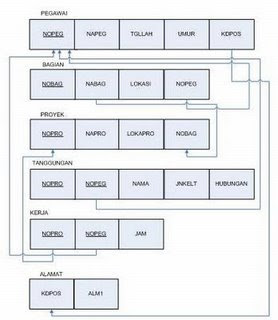Normalization is the process of efficiently organizing data in a database. There are two goals of the normalization process: eliminating redundant data (for example, storing the same data in more than one table) and ensuring data dependencies make sense (only storing related data in a table). Both of these are worthy goals as they reduce the amount of space a database consumes and ensure that data is logically stored.
The Normal
The database community has developed a series of guidelines for ensuring that databases are normalized. These are referred to as normal forms and are numbered from one (the lowest form of normalization, referred to as first normal form or 1NF) through five (fifth normal form or 5NF). In practical applications, you'll often see 1NF, 2NF, and 3NF along with the occasional 4NF. Fifth normal form is very rarely seen and won't be discussed in this article.
Before we begin our discussion of the normal forms, it's important to point out that they are guidelines and guidelines only. Occasionally, it becomes necessary to stray from them to meet practical business requirements. However, when variations take place, it's extremely important to evaluate any possible ramifications they could have on your system and account for possible inconsistencies. That said, let's explore the normal forms.
In the field of relational database design, normalization is a systematic way of ensuring that a database structure is suitable for general-purpose querying and free of certain undesirable characteristics—insertion, update, and deletion anomalies—that could lead to a loss of data integrity

Diagram Of Normalization
ERD in the above, there are 2 that confusion can lead to an error occurs, namely:
- On the relationship between the entity and the project does not have a clear cardinality.
- There is a ternary relationship have on the relationship.
The ERD can be improved based on the above confusion
Here the relationship between project entity and eliminates the burden based on business logic, the seal was found by an employee is not a project.
1. First Normal Form (1NF)
First normal form (1NF) sets the very basic rules for an organized database. A normal form used in database normalization. A relational database table that adheres to 1NF is one that meets a certain minimum set of criteria. These criteria are basically concerned with ensuring that the table is a faithful representation of a relation and that it is free of repeating groups.
- Eliminate duplicative columns from the same table.
- Create separate tables for each group of related data and identify each row with a unique column or set of columns (the primary key).

2. Second Normal Form (2NF)
Second normal form (2NF) further addresses the concept of removing duplicative data:
- Meet all the requirements of the first normal form.
- Remove subsets of data that apply to multiple rows of a table and place them in separate tables.
- Create relationships between these new tables and their predecessors through the use of foreign key( a field in a relational table that matches the primary key column of another table. The foreign key can be used to cross-reference tables) .
3. Third Normal Form (3NF)
Third normal form (3NF) goes one large step further:
- Meet all the requirements of the second normal form.
- Remove columns that are not dependent upon the primary key.
4. Fourth Normal Form (4NF)
Finally, fourth normal form (4NF) has one additional requirement:
- Meet all the requirements of the third normal form.
- A relation is in 4NF if it has no multi-valued dependencies.
Remember, these normalization guidelines are cumulative. For a database to be in 2NF, it must first fulfill all the criteria of a 1NF database.
My References
1. ER Ngurah Agus Sanjaya. Slide Part 6 - NORMALISASI
2. http://en.wikipedia.org/wiki/Database_normalization
3. http://databases.about.com/od/specificproducts/a/normalization.htm


